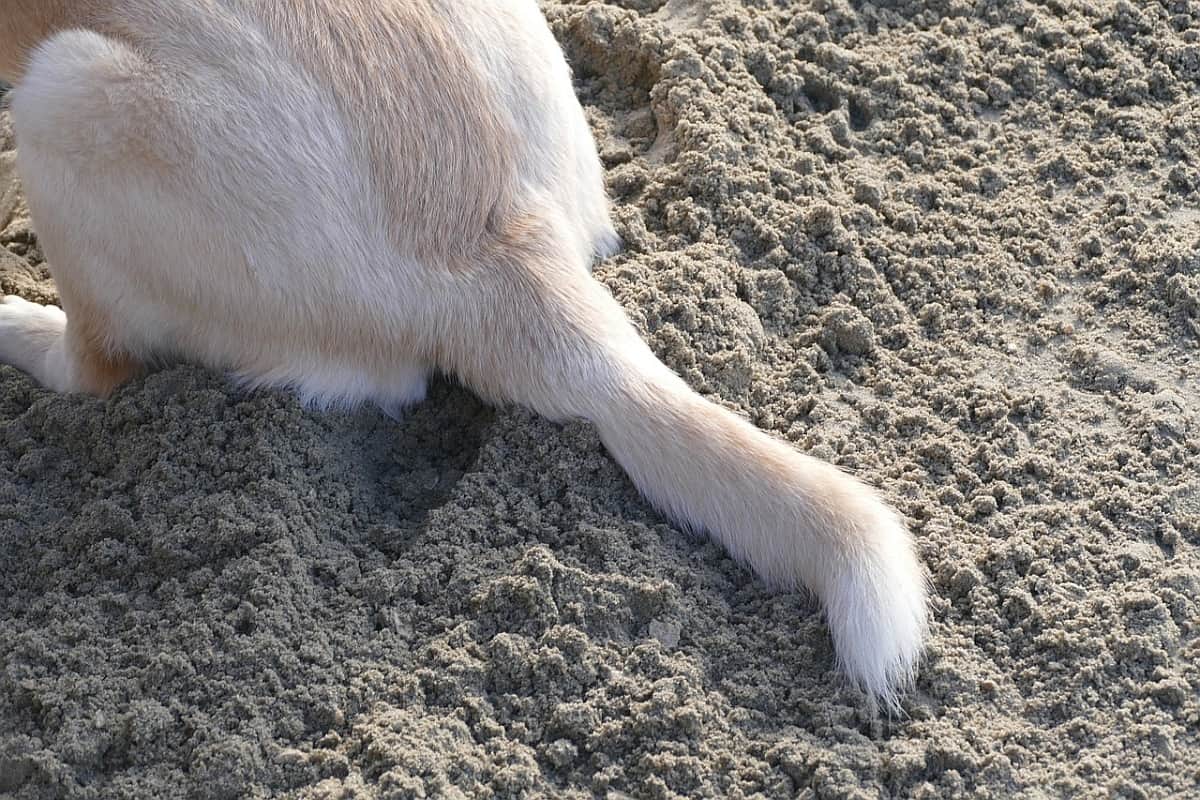Owning a dog is a rewarding experience, but it also comes with the responsibility of ensuring your furry friend’s health and well-being. One common issue dog owners may encounter is an infected happy tail in their dogs. While a wagging tail is often a sign of a happy and excited pup, it’s essential to be aware of the potential for infection and know how to recognize and treat it promptly.
Understanding Infected Happy Tails
Is your dog’s tail infected? This can occur when the tail is repeatedly injured or traumatized, leading to inflammation and infection. This condition, also known as Happy Tail Syndrome, typically affects dogs with long or heavy tails, such as Labrador Retrievers and Pit Bulls. The constant wagging of the tail against hard surfaces, such as walls or floors, can cause abrasions and open wounds, making the tail susceptible to infection.
Recognizing Symptoms of an Infected Happy Tail
Identifying an infected happy tail early is crucial for effective treatment. Common symptoms may include redness, swelling, and discharge around the base of the tail. Your dog may also exhibit discomfort, like whining or reluctance to wag their tail. The skin around the tail may become ulcerated or develop a foul odor in severe cases.
Monitoring your dog’s behavior and physical condition regularly is essential, paying close attention to any changes in their tail or overall health. If you notice any signs of infection, it’s vital to seek veterinary care promptly to prevent further complications.
Seeking Veterinary Care for Your Dog
When dealing with an infected happy tail in dogs, it’s crucial to consult a veterinarian for proper diagnosis and treatment. Your veterinarian will examine your dog’s tail and may recommend tests, such as a bacterial culture, to determine the specific type of infection present.
Treatment for an infected happy tail typically involves a combination of antibiotics, topical medications, and wound care. Sometimes, your veterinarian may recommend tail bandaging to protect it from further injury. Following your veterinarian’s instructions carefully and attending follow-up appointments to monitor your dog’s progress is essential.
Preventing Infections in Happy Tails
Preventing infections in happy tails requires proactive measures to protect your dog’s tail from injury. Consider providing your dog with a soft, padded bed, minimizing the risk of abrasions from hard surfaces. Additionally, be mindful of your dog’s environment and avoid situations where their tail may come into contact with sharp objects or rough surfaces.
Regular grooming can also help prevent infections by keeping your dog’s tail clean and debris-free. Trim any excess fur around the base of the tail to reduce the risk of hair becoming tangled or matted, which can create a breeding ground for bacteria.
Caring for Your Dog’s Tail at Home
In addition to veterinary care, there are steps you can take at home to help your dog’s tail heal and prevent further infection. Keep the area clean and dry, gently washing the tail with a mild antiseptic solution recommended by your veterinarian.
Avoid harsh chemicals or ointments that may irritate the skin or delay healing. Monitor your dog’s tail closely for any changes, such as increased redness or swelling, and contact your veterinarian if you have any concerns.
Safeguarding Your Canine Companion’s Happiness with Happy Tail Saver
Recognizing and treating an infected happy tail in dogs is essential for ensuring your pet’s health and well-being. By understanding the symptoms of infection, seeking prompt veterinary care, and taking preventive measures, you can protect your dog’s tail from injury and promote healing. If you ever need products to aid your pet’s recovery, consider exploring options from the Happy Tail Saver, which offers solutions to help dogs heal and thrive after injury.



